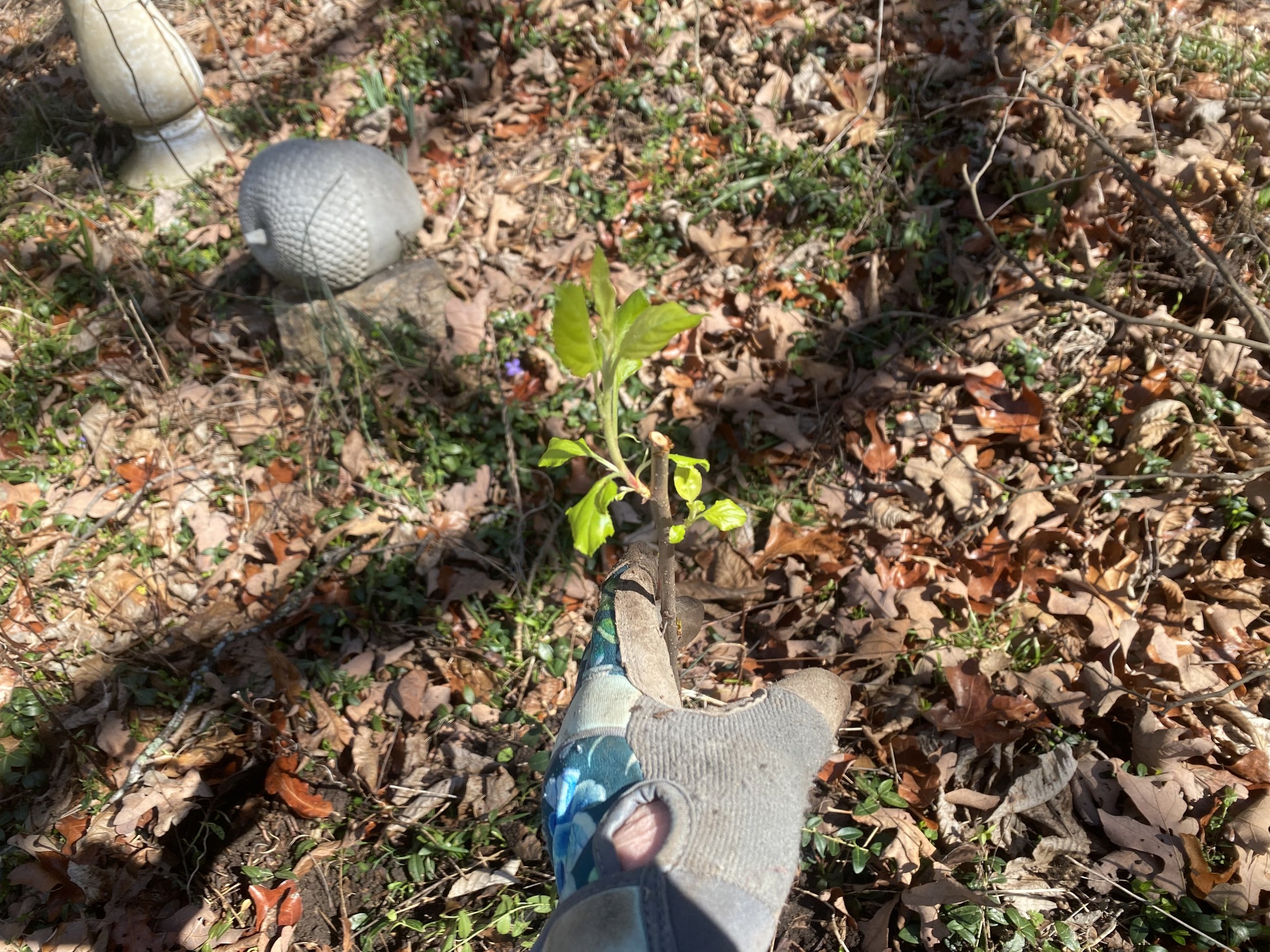After Rain Chores
/A gift crabapple tree is going in where a cherry tree died last year. (charlotte ekker wiggins photo)
After Rain Chores
Besides my pick axes and boots, rain is the next favorite garden assistant. When you plant on a limestone hillside, rain is not only critical for your success but it also can be helpful.
One of the first things I did when I started to develop flower beds - more like shelves with rock borders, I made sure the rain coming from uphill property would keep the flower shelves hydrated. That meant making small trenches to guide the water and lowering the flowering shelves so they could naturally collect water.
Now more than 40 years on this hillside, rain has become critical to my success:
Dig holes after a rain. Soil will be more pliable and easy to work. I mark off possible locations before rain, then check the possible areas after rain. If there are too many rocks, I move the location.
Remove dead trees. The rain will make dead tree removal easier, especially for trees with deep roots.
3. Plant trees. You can more easily dig deep holes for root planting.
4. Plan to remove invasive species such as bush honesuckle. I can pull out young bush honeysuckle starts by hand after a good rain.
5. Follow the trenches rain makes and use those low spots for rain gardens.
6. Look for dry spots and adjust whatever is growing. You don’t want plants that need a lot of moisture growing in a dry area.
7. Check that birdbaths have been filled. If not, move the bird bath.
8. Note rain debris. Retrench the area to guide rain into areas with soil and flowers.
9. Ease plant stakes deeper into the ground. The rain-softened soil will have more give after a rain.
10. Walk through your garden and notice what’s starting to come up. Rain encourages new growth.
Rain certainly can help a garden with moisture but its also an excellent planting aid.












